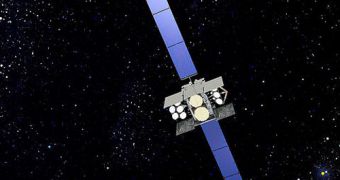Officials at the Boeing Corporation announce today that the United States Air Force (USAF) has just commissioned the third Wideband Global SATCOM (WGS) military communications satellite. The instrument has been constructed at Boeing, which is the primary contractor for the entire program. The purpose of this constellation is to provide the US military forces and their allies with improved broadband communication capabilities, that can reach to every major theater of operations the US is currently engaged in.
“This milestone means that our warfighters around the world, even deep in the mountains or far out at sea, can now reap the benefits of high-capacity communications. WGS delivers the information they need to make quicker decisions, which is a key enabler of mission success. This is a system that saves warfighters' lives and makes their lives better,” says the WGS SATCOM Group Commander, Air Force Col. Don Robbins. The representative adds that the WGS is the highest-capacity satellite communications system the US Department of Defense (DOD) currently has access to.
The goal of the new system is to provide a pathway for carrying a host of signals, ranging from full-motion video streams captured by air drones to TV, e-mails, radio, and other services. The service is destined to US troops fighting overseas, which have notoriously-difficult access to the Internet and afferent services. The third WGS satellite adds additional land to the covered area. The first two instruments were located over the Middle East, and over the Pacific Ocean, respectively, while the third is located over the Atlantic Ocean.
“New airborne intelligence, surveillance and reconnaissance platforms require increased bandwidth, and we're enhancing the Block II WGS satellites to deliver that critical capability. WGS is proving to be a cost-effective solution that delivers results for warfighters today and can be evolved to meet the military's future communications needs,” says the vice president of Boeing Space and Intelligence Systems' (BSIS) Navigation and Communication Systems division, Ken Torok. He explains that, between 2012 and 2013, Boeing will be in charge of constructing another three WGS satellites, which will be a part of the Block II constellation.

 14 DAY TRIAL //
14 DAY TRIAL //